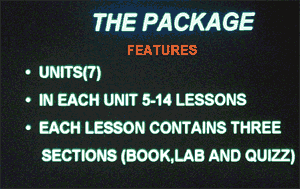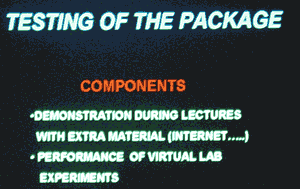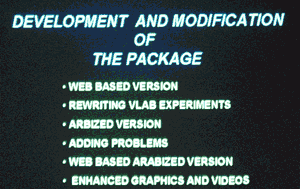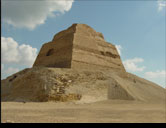A. Introduction
to the Southern University Physics Department
Southern University
and A&M College is a major Historically Black University
(HBCU) that has been around for over a century. It has the
Distinction of graduating more African-American engineers
and  scientists
than any other college or University in the South. The Southern
University Physics department offers both a BS and an MS in
physics. There are fifteen full time and three part-time faculty
members in the department. Many of the faculty members are
involved in active research in both physics and physics education.
scientists
than any other college or University in the South. The Southern
University Physics department offers both a BS and an MS in
physics. There are fifteen full time and three part-time faculty
members in the department. Many of the faculty members are
involved in active research in both physics and physics education.
In addition to
offering a BS and MS in physics, the department is also involved
in important service courses for the University. These service
courses include a Calculus based physics course that is used
to train not just physics majors but also engineers, biologists
and chemists in the basics of physics. The calculus-based
course consists of two semesters, the first of which covers
mechanics and thermal physics, Physics 221, and the second
semester, Physics 222, which concentrates on electrical and
magnetic phenomena. There are generally, each semester three
sections, of Physics 221 and two sections of generally, each
semester three sections, of Physics 221 and two sections of
Physics 222 each with an accompanying laboratory course. During
the Fall semester of 2002, there were 125 students in Physics
221 and 74 students in Physics 222 for a total of 199 students
taking freshman physics. The number of students taking Physics
221 and 222 each semester is similar to this number.
B. Participants
in the Computer Assisted Physics Projects
Dr. Atalla and
Dr. Hayden visited Southern University in September to introduce
the Physics CD-ROM program to the Physics Department in general,
but especially to the Physics 221 and 222 instructors. The
different parts of the CD-ROM, were demonstrated in their
classes and the faculty members were asked if they would like
to be involved in a field test of this software.
There are five
faculty members of the department  who
regularly teach Physics 221 and 222 each semester. Of these
five faculty members four were involved in the testing of
the interactive CD-RM. There are three full professors and
one associate professor taking part in the field test. Each
faculty member has taught freshman physics for a number of
years and is thus highly experiences in the subject. The CD-ROMS
arrived in mid-November and were passed out to the four faculty
members soon after. They then preceded to study the CD's to
determine how effective it would be in teaching their subjects
matter. A particular subject was assigned to each faculty
member. The subjects assigned were Mechanics, Oscillations,
Electricity and Magnetism, the topics that represent the major
thrust of Physics 221 and 222.
who
regularly teach Physics 221 and 222 each semester. Of these
five faculty members four were involved in the testing of
the interactive CD-RM. There are three full professors and
one associate professor taking part in the field test. Each
faculty member has taught freshman physics for a number of
years and is thus highly experiences in the subject. The CD-ROMS
arrived in mid-November and were passed out to the four faculty
members soon after. They then preceded to study the CD's to
determine how effective it would be in teaching their subjects
matter. A particular subject was assigned to each faculty
member. The subjects assigned were Mechanics, Oscillations,
Electricity and Magnetism, the topics that represent the major
thrust of Physics 221 and 222.
The results of
the faculty member's responses to the CD-ROM are summarized
below as well as a list of minor errors that were found in
the text. The questionnaires are included as well.
C. Strengths
of the Physics CD-ROM
After they were
given a chance to study the CD-ROM in depth, the professors
were then asked to fill out a questionnaire, which was designed
to measure how effective they thought the CD would be in teaching
physics, their thoughts on the future of the integration of
technology in teaching, and their comments and suggestions
on the product.
The professors
were all pleased with the scope of topics covered by the CD.
The packages included all of the topics that are covered in
Physics 221 and 222, including all of the sub-topics (see
attached review of CD-ROM). They were all complementary about
the format in which the information was displayed as well
as the separation of the packages into text, labs and quizzes.
Two of them particularly liked the quiz sections. Three of
the four stated that the software was easy to install and
was at an appropriated level for their students. They also
said that it at least satisfactorily aligned with their curriculum
and that it encouraged collaborative learning. The Physics
222 facially members liked the electric circuit auxiliary
section that created series, parallel, and inductive circuit
problems for the students to be able to practice on.
The faculty members
also indicated that they believed that the concept of such
a package as this one is good and is needed in physics education.
Three of the faculty members thought that this software would
be at least partially useful in their course.
D. Weaknesses
of the Physics CD-ROM
One of the weaknesses
of the package is that the virtual labs require another software
program to run (Interactive Physics). The CD's that were sent
to Southern didn't have an active Interactive Physics program
on them and thus the professors were unable to study the virtual
laboratory section. Because of this limitation, the professors
were not able to answer the question on interfacing with other
products. There are also some errors with regard to physics,
such as in the magnetism section, i.e., the formula for the
magnetic flux,*****(insert formulas section)*****
E. Recommendations



